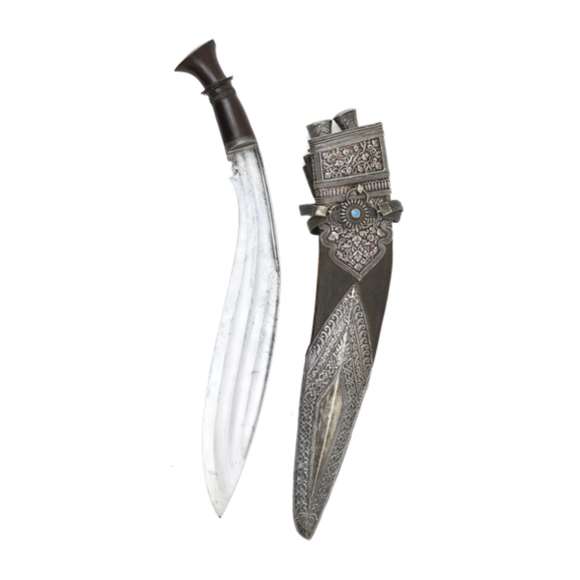Language: Indonesian
Source: Period writings
Description
Kudi bares, or in Dutch sources written koedi bares, is a farming tool that is thought to have been used across Java in olden times, but by 1900 was only seen in a few remote, underdeveloped areas.1

A kudi illustrated by Snouck Hurgronje.
The thickened part would be used as a hatchet, among others to cut down bamboo, while the narrower part on top would be used to cut the smaller branches off a harvested bamboo shoot.
Such tools have been in use since at least the 14th century, testified by one that was found by archaeologists on a 14th-century site.2

The 14th-century kudi illustrated by Snouck Hurgronje.
As weapons
Later versions developed into weapons, among which the long-handled kudi trantang. By 1817 these had already fallen out of use.3
In the later period, up to around 1900, some old kudi trantang were still worn but now as a protective talisman. The site of it waving around was thought to scare off ferocious beasts like tigers.4

A weapon-like kudi trantang. Possibly from Madura.
Sold by Mandarin Mansion in 2020.
Notes
1. C. Snouck Hurgronje; Iets over koedjang en badi. Published in Tijdschrift voor Indische Taal- Land- en Volkenkunde. Deel XLVII. Albrecht & Co, Batavia, 1904.
2. Ibid.
3. Sir Stanford Raffles; History of Java. Volume I. Murray, London. 1817. Page: 330.
4. C. Snouck Hurgronje; Iets over koedjang en badi. Published in Tijdschrift voor Indische Taal- Land- en Volkenkunde. Deel XLVII. Albrecht & Co, Batavia, 1904.






